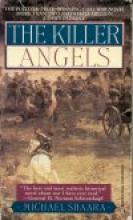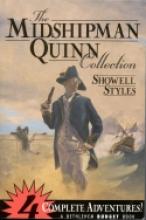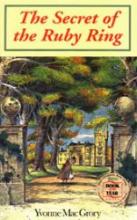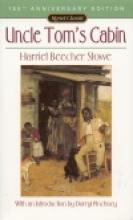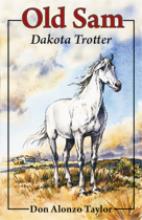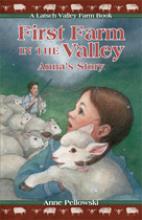19th century Historical Fiction
The Killer Angels
What is remarkable about this book is both the completeness of the picture we are given of the importance and complexity of the battle and the humanity of its key players. It is surprisingly unbiased toward either side, instead focusing on understanding the multitude of motivations that influenced the key players. The book contains twenty-three chapters. Each chapter tells a piece of the story from the point of view of different characters (a number of the characters have more than one chapter - four chapters are from General Lee's point of view, six chapters are from Colonel Chaberlain's point of view, etc.) The author seems to take special care in elaborating upon the South's General Longstreet and the North's Colonel Chamberlain.
High school students and adults will come away from this book with a much fuller sense of the gravity and scope of the civil war. It is intense, although not overly graphic and does contain some coarse language (which is both realistic and not overdone).
Note: The recent movie, Gettysburg, is based on this book and is quite good. It is remarkably non-gory without destroying the necessary sense of reality. I would recommend reading the book first as it provides some details not shown in the movie and makes it much easier to follow the multitude of characters. My one caveat is that I didn't care for the way General Lee was portrayed in the movie. They left out some important details that would have affected his admittedly poor decisions (namely his bad health) and in general, I found Martin Sheen's portrayal too buffoonish and undignified in contrast with the book.
The Midshipman Quinn Collection
Septimus Quinn is a "small and studious" 15 year old who finds himself in the midst of all sorts of adventures fighting Napoleon under Lord Nelson. Daring naval assignments take him all over the Mediterannean as he really uses his head to deal with pirates, arrogant shipmates, runaway French patriots, clueless prison guards, etc. Complex escape plans, wild disguises and interesting sub-plots are par for the course. The reader will learn a great deal about ships and life at sea and the danger and excitement of sea battles amidst accounts of true historical events.The strategies of battle and other historical details are quite fascinating. The suspense and drama make it most appropriate for junior high and high school.
Copyrights 1956 - 1965
This book was donated for review by Bethlehem Books
The Secret of the Ruby Ring
While the story is told from the point of view of a young Irish Catholic girl, it is not a religious book. The theme of the book relies on her Irish Catholic heritage and how Irish Catholics were treated at this time in history in their own country. This book would be of interest to anyone looking for an understanding of how a manor home is run, the social complexities of this time for men, women, and children, the situation of the oppressed by others, and a look at this time in Ireland's history.
At the same time, this is a children's book and the tone of the story is appropriate for children, while showing them (and not telling them) all the wonderful things they can be grateful for.
Uncle Tom's Cabin
The story is about slavery in America. It follows the lives of two slaves in detail, Eliza and Uncle Tom, and introduces us to a great many more slaves and masters and their stories. The two belong to the same master in Kentucky. When the master falls on hard times (from his own inability to manage his estate) he ends up making a deal to sell these two - despite the fact that both of them are rather dear to him and his family. Getting wind of this Eliza decides to run for safety with her son while Uncle Tom allows himself to be taken away from his wife and young children. Eliza risks her life to save her child - running across the ice floes of a partially frozen Ohio river to escape - then finds her way along an underground network. (I won't tell you how her story comes out.) Uncle Tom is sold and resold. He is steadfast in his faith throughout - though not unchanging. Moreover, he affects those who he meets along the way.
This book is written in a very foreign style. - at least to the modern reader. Chronologically Mrs. Stowe's style fits somewhere between that of the crafters of the Constitution and that of Mark Twain. But it is not so easy to put it into any other category. Her own narration is a bit archaic, overtly Christian, sometimes sarcastic, sometimes patronizing, and yet very broad minded. She calls you "gentle reader". She says "now don't you think that is fair?" when she expects you to come to the opposite conclusion. And yet she sees clearly through all the haze of the issue - i.e. the "shades of grey" everyone loves to talk about when they can't bear to say right vs. wrong. And she does more - she presents us with characters who take various positions on the slavery issue. Not just "it's right" and "it's wrong" - but a wide variety of views. She allows them ample voice and reason to discourse their whole argument; she does not make them straw men; she does not mitigate or twist their ideas; she lays out the best cases for and against - and from several different angles. In the midst of this she demonstrates the effects on the PEOPLE who are subjected to the system - those who are the masters as well as those who are the slaves. It is incredibly revealing to have the whole gamut - the entire conversation - all in one accessable story. And it is incredibly convincing!!! Which is why, as legend has it, Abe Lincoln, when introduced to her for the first time declared, "So you're the little lady responsible for this big war."
This book ought to be read for a lot of different reasons.
1) Arguments aren't just fights. When properly done they are tools to get at the truth. This book shows how to argue in the best sense. Reasonable people may have views that are wrong - and can be changed by convincing. (Admittedly, most of those in this book are not, ultimately, convinced - but some are - it's good to see).
2) Style! You have to get a taste of this style of hers. It is a peculiar dish that we rarely see set before us these days (how much early 19th century do you typically read!!).
3) Faith. Uncle Tom has faith in God. It grows stronger and better through his trials. And, it has effects on those he meets and deals with to different degrees and in different ways. (That's realistic.)
4) It shows us that a story can be an extremely convincing form of persuasion.
5) There is a lot revealed about the fundamental nature of man and his free will by exploring the effects of stifling that free will via enslavement. Her characters vary wildly in their reaction to the invisible wall between master and slave. The slaves will react, contort and re-form (or de-form) themselves to this unnatural order. The slave owners must likewise be ignorant or somehow justify their actions. To the author's credit we see that the justification is sometimes wicked or perverted and sometimes just well-meaning but ultimately flawed reasoning.
6) One thing that kind of percolates up from 5) is that there is a difference between the will and the intellect. Philosophers have argued about this for millenia. Many people believe that if someone knows what the good thing is they will naturally want to do it. But knowing and doing ARE different. And some may know what is good but not do it. Some may even want to do what is not good and through an underhanded twist of the will convince themselves (and really THINK they know) that the bad is good. The sooner a person can grasp the difference between the intellect and the will the more they will be able to direct their own thoughts and actions maturely, profitably and honorably.
7) Believe it or Not! This book has some incredible (as in not believable) events. However, Mrs. Stowe, it turns out had done a lot or research. Most of the events were gathered from real events. Even the more incredible ones such as Eliza crossing the river. - Don't try that at home!!!
Age level: High School Freshman +/- a year. Kleenex required.
Many editions available
Winter Danger
As an adventure and historical tale, this is a great read, but it offers a deeper level too. The story touches upon some very essential points about the purpose of civilization, family and loving one's neighbor. This is a fairly easy read for 2nd or 3rd grade and up but would also make a great read-aloud.
Old Sam, Dakota Trotter
First Farm in the Valley: Anna's Story
Recommended reading age 8-12; Suggested listening age 5-Up. Of interest to older children and boys as well.

